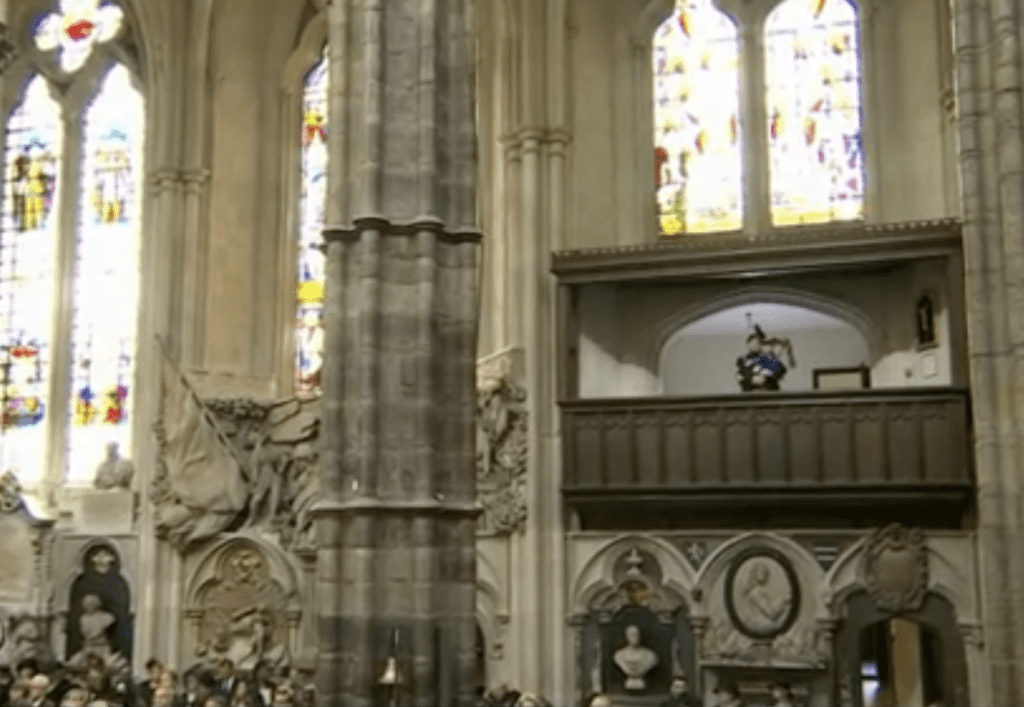
In honor of Queen Elizabeth II, the world experienced how the arts can be used to celebrate life, and in this case, perhaps unite the world — even for a moment.
A funeral’s purpose is to create an experience for the participants and witnesses. The arts are called upon to enliven and reinforce that experience–of comfort and encouragement, of support and inspiration, all while communicating and reinforcing important values. Most funerals attempt to serve the bereaved family members and friends of the deceased, but in a state funeral, the audience is gathered from the city, state, nation, and what has now become, the intertwined global village. An individual life has ended, and the Queen’s artistically- crafted funeral created an opportunity for us all to experience the enduring community which was built on a 1,000-year-old monarchy. We will go on, and the deceased will live on through us as we honor their life and contribution.
As I observed the Queen’s funeral proceedings, here are my impressions and lessons we can appreciate.
The planning for the Queen’s elaborate funeral began in 2005, when she was 79, unlike what people must deal with when given little advanced notice of a death. Rehearsals of the unison movements of uniformed officers have been held throughout the years and recently detailed extensive security arrangements had been added to protect the royal family and the vast number of expected world leaders and foreign dignitaries. Ensuring that history was properly honored, we’re told that the Queen was involved in every detail of the ritual, including selecting scripture readings and hymns.
For residents of London, the ceremony began musically — the tolling of church bells, one every minute for 96 minutes, one toll for each year of the Queen’s life. Entering the cathedral in processions ahead of the Queen’s casket were black-attired attendees, honoring a tradition started by Queen Victoria when she wore black throughout the remaining 40 years of her life, after the death of her husband Albert. Representatives of the Commonwealth nations, and other non-western peoples might have preferred to wear white, or vibrant colored tapestries, but all adhered to the dress code of western mourning. Color was left to the historically accurate military attire, and the flowers and stain glass of the cathedral windows. The queen’s children walked behind the cortege, but sixty-six other members of the royal family processed together. An interesting moment occurred when the US president Joseph Biden and his wife were asked to step aside to allow the British dignitaries to pass before continuing to take their seats beside more world leaders than had ever gathered in one place, back to the 1087 funeral of Elizabeth’s ancestor William the Conqueror.
For most members of the global village our experience was curated by the videographers that filmed the event. They were our eyes on the story being told. Images of the processions included panoramic views of community members and flags lining the roadways, close ups of the flower-draped casket and the red-coated young men lifting and transporting it, and long shots of entire regiments of men in colorful attire, rhythmically processing together, as one organism, in lockstep precision. Before the modern era, wars were begun and won by soldiers marching into battle in such a uniform manner, but only the British have continued perfecting this feat.
Hence the need for rehearsals.
Intermittently, throughout the run of the show, into the cathedral and out, close-up camera angles put the Queen’s diamond-studded crown in the center of our screens, lest we forget we are marking the death of both a woman and a monarch.
The initial familiar theme of comfort at Christian services, was spoken in readings using 17th century Old English pronouns, (thee, thou,) and sung in songs by multiple choirs. “Death is defeated.” The directive – “Do not be sad.” “Though I walk in the shadow of death, I fear no evil,” Thy rod and thy staff comfort me.”
Storytelling, a traditional feature of most funerals, had begun in the media as soon as it was announced that the Queen had died, so what was left to say about her life was her long dedication to service to her people, promised on her 21st birthday while she was still a princess. The archbishop suggested that the life of Queen Elizabeth II fit the pattern of those who serve God – “they are loved and remembered when others are long forgotten.”
Musical instruments carried and underlined the messages and sentiments of the service, the individual and communal values to uphold. The wailing of the bagpipes accompanied the sorrow we all feel when faced with the reality of death, our own and those of our loved ones, the prayers that God heal our sorrow, and after this life we may all face a merciful God.
At the point where we must let go and “commend the soul of Elizabeth to dwell in the Heavenly Jerusalem,” (or depending on your faith, commend her to larger life and to the ages), we see trumpeters in gold suits, artistically symbolled flags on their instruments, accompanying the prayer, “May God grant peace and life everlasting.” Triumphant chords and harmonies come to a glorious crescendo, followed by all sound dissolving into absolute silence. For the next two minutes, our videographer/guides show us off-site participant communities of people seated on lawns in parks, in chairs in town squares, in Belfast, Christ Church, Edinburgh, Hyde Park – all holding the corners of our blanketed silence. Together we experience absence, that which is no longer here.
As the final section of the ceremony begins, the trumpets return. We see a close-up of Elizabeth’s son Charles. Looking to the future without her, all sing, “Long live our noble king” followed by the line, “May he defend our laws.” As a US citizen currently experiencing our divided, sometimes unlawful political culture, I wonder if there is anything in these proceedings to unify and mend our body politic. Many question whether this will be enough to hold the monarchy in place or help to heal the divisions between countries represented at this sacred time and in this sacred place.
No trumpets now. The shaky tones of the bagpipe return to accompany the casket as it is carried from the worship space to the chapel for burial.

